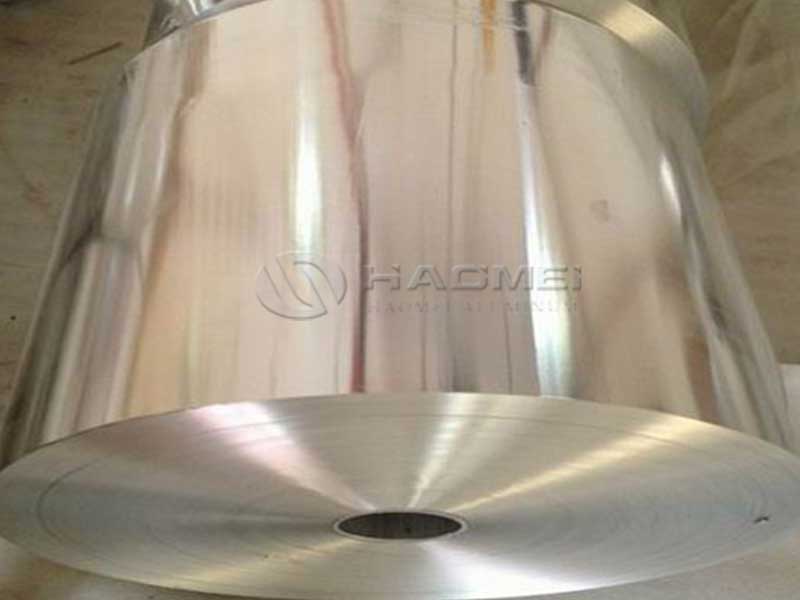Aluminum foil for flexible pcb
In the rapidly evolving landscape of electronics manufacturing, flexible printed circuit boards (flex PCBs) have emerged as crucial elements enabling compact, bendable, and lightweight devices. Integral to the construction and performance of these flex PCBs is one often overlooked material: aluminum foil.
The Role of Aluminum Foil in Flexible PCB Construction
Aluminum foil in flexible PCB fabrication typically serves as an electrical conductor, grounding plane, shield, or heat dissipation layer. Unlike conventional rigid PCBs that rely on copper foil primarily for circuitry, aluminum foil introduces advantages in rigidity, thermal management, and corrosion resistance for high-performance flex PCB demands.
1. Conductive and Shielding Layer:
Flexible PCBs operate in high-frequency and sensitive signal environments. Aluminum foil’s excellent electrical conductivity (~3.5 × 10^7 S/m) and electromagnetic shielding capability reduce interference and signal attenuation. When laminated proximal to signal traces or ground planes, it enhances signal integrity.
2. Thermal Management:
One of the pivotal constraints for tight-packed flexible circuits is heat dissipation. Aluminum exhibits superior thermal conductivity (~205 W/m·K), surpassing many metals used in electronic assemblies. Integrating aluminum foil layers efficiently channels heat away from hotspots, improving longevity and reliability.
3. Mechanical Strength:
Though aluminum foil is thin (commonly 20–100 microns for PCBs), it imparts structural reinforcement and limits dimensional changes due to flexing or environmental factors, making it ideal for wearable and foldable technologies.
Technical Parameters and Chemical Properties
Aluminum foil specifically tailored for flex PCB applications demands a careful balance between thinness, ductility, and electrical/thermal characteristics. Below is a detailed outline of technical specifications:
| Parameter | Value/Range |
|---|---|
| Thickness | 10 µm – 100 µm |
| Alloy | 1100 (Purity ≥ 99.0%), 3003 (Al-Mn) or custom alloys |
| Temper | O (annealed; maximum ductility), H14-H18 (strain hardened) |
| Electrical Conductivity | 58–61% IACS (~35 × 10^6 S/m) |
| Thermal Conductivity | ~205 W/m·K |
| Density | 2.70 g/cm³ |
| Tensile Strength | 40–110 MPa (depending on temper) |
| Elongation at break | 10–50% (higher for O temper) |
| Surface Finish | Smooth, may be treated with passivation |
Alloy & Temper Details:
1100 Alloy: Approximately 99% pure aluminum with excellent corrosion resistance, moderate conductivity, soft and highly ductile. Essential for tight bends in flex PCBs without cracking.
3003 Alloy: Slightly higher mechanical strength via manganese additions but sacrificed some conductivity; balanced ductility for certain rigid-flex or thermally demanding designs.
Temper O: Fully annealed providing maximum ductility, minimizing work hardening effects during manufacturing.
Temper H14-H18: Partial or full hardening; utilized where mechanical stiffness is required without sacrificing flexibility too much.
Standards Guiding Aluminum Foil Use in Flexible Electronics
Manufacturers integrate aluminum foil coatings conforming to recognized standards ensuring quality and compatibility in electronics fabrication:
ASTM B479 / ISO 16738: Specifications defining thickness, surface quality, and maximum contamination.
IPC-TM-650 2.3.16: Test method examining conductivity and adhesion under flexing conditions for flexible circuits.
RoHS Compliance: Ensuring no harmful substances (like lead or mercury) are present in the foil components used.
Implementation and Fabrication Insights
In flexible PCB design, aluminum foil is laminated onto substrates (polyimide or polyester films) often employing dielectric adhesive layers tuned for flexibility and thermal stability. The foil thickness is optimized to maintain minimal additional mass and thickness while balancing electromagnetic and thermal requirements.
During fabrication, thermal annealing may be performed locally to restore ductility. Additionally, surface treatments (oxidation passivation or polymer coatings) can enhance solderability and corrosion resistance without limiting conductivity.
Use-case example: In flexible OLED display driver circuits where high temperatures and limited assembly thickness prevail, AI-foil backed flex PCBs avoid overheating and brittle failures.
Summarizing the Advantages of Aluminum Foil in Flexible PCBs
- Superior thermal conductivity than copper contributes significantly to device lifespan.
- High corrosion resistance ensures reliability in varying environments.
- Intrinsic ductility supports extensive bending and flexing without degradation.
- Lightweight and low thickness matches well with modern ultra-thin electronics.
- Cost-effectiveness when compared to precious metal alternatives or specialty conductive polymers.
Conclusion
Aluminum foil’s underrated yet pivotal role in flexible printed circuit boards cannot be overstated. Its blend of electrical, thermal, mechanical, and chemical properties makes it a formidable material solution adaptable through controlled alloy alloying, tempering, and manufacturing practices. By adhering to rigorous industry standards and tailoring specifications, aluminum foil empowers the expansion of flexible circuitry across consumer electronics, automotive, healthcare, and aerospace fields.
Chemical Composition Typical Table (for 1100 Alloy % by weight):
| Element | Typical Content |
|---|---|
| Aluminum | 99.0 min |
| Copper | 0.05 max |
| Iron | 0.95 max |
| Manganese | 0.05 max |
| Silicon | 0.95 max |
| Zinc | 0.10 max |
| Titanium | 0.03 max |
| Others | 0.05 max |
In selecting aluminum foil for flex PCBs, these nuanced properties enables engineers to craft circuits that meet the increasingly stringent demands of modern flexible electronics.
If your project calls for superior heat management, durability, and high-frequency shielding within the constraints of flexibility, aluminum foil-based PCBs prove a robust and scalable solution worth serious consideration.
https://www.al-sale.com/a/aluminum-foil-for-flexible-pcb.html






